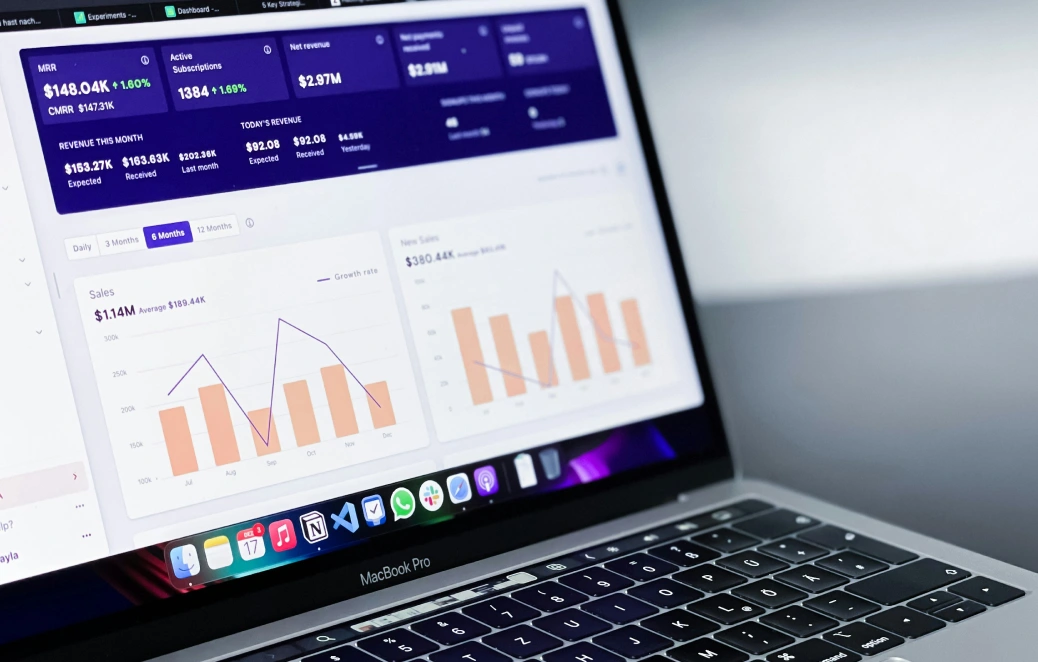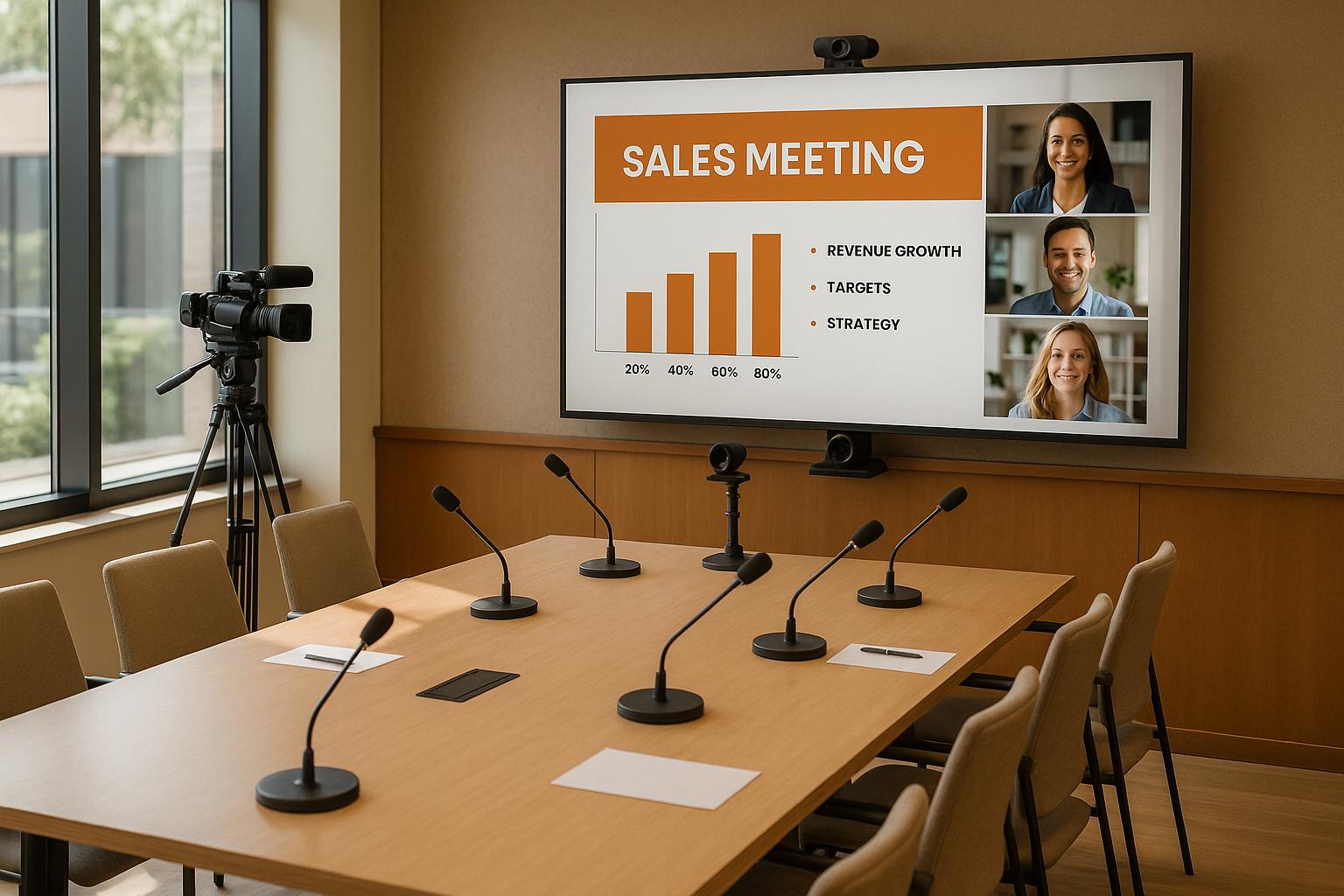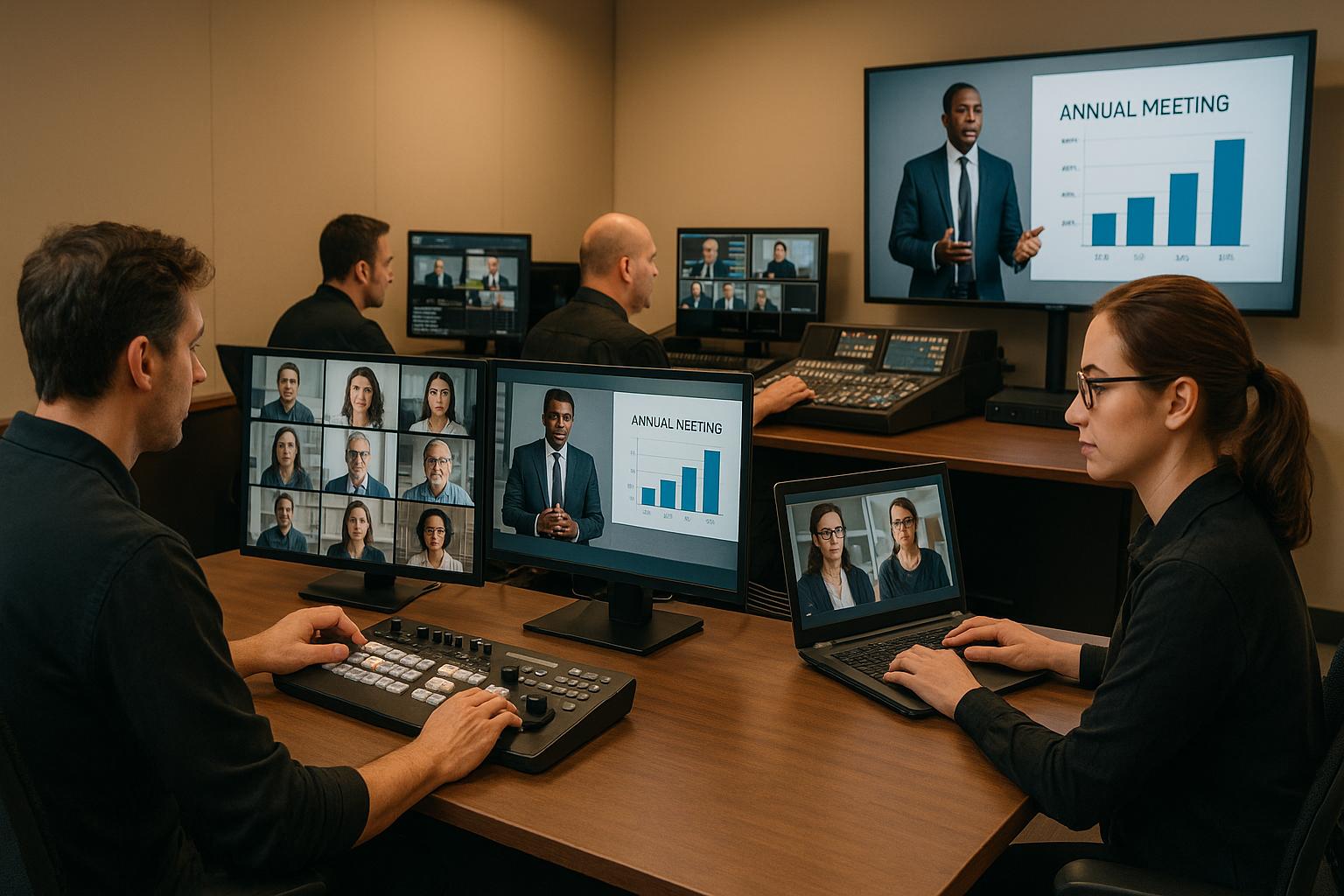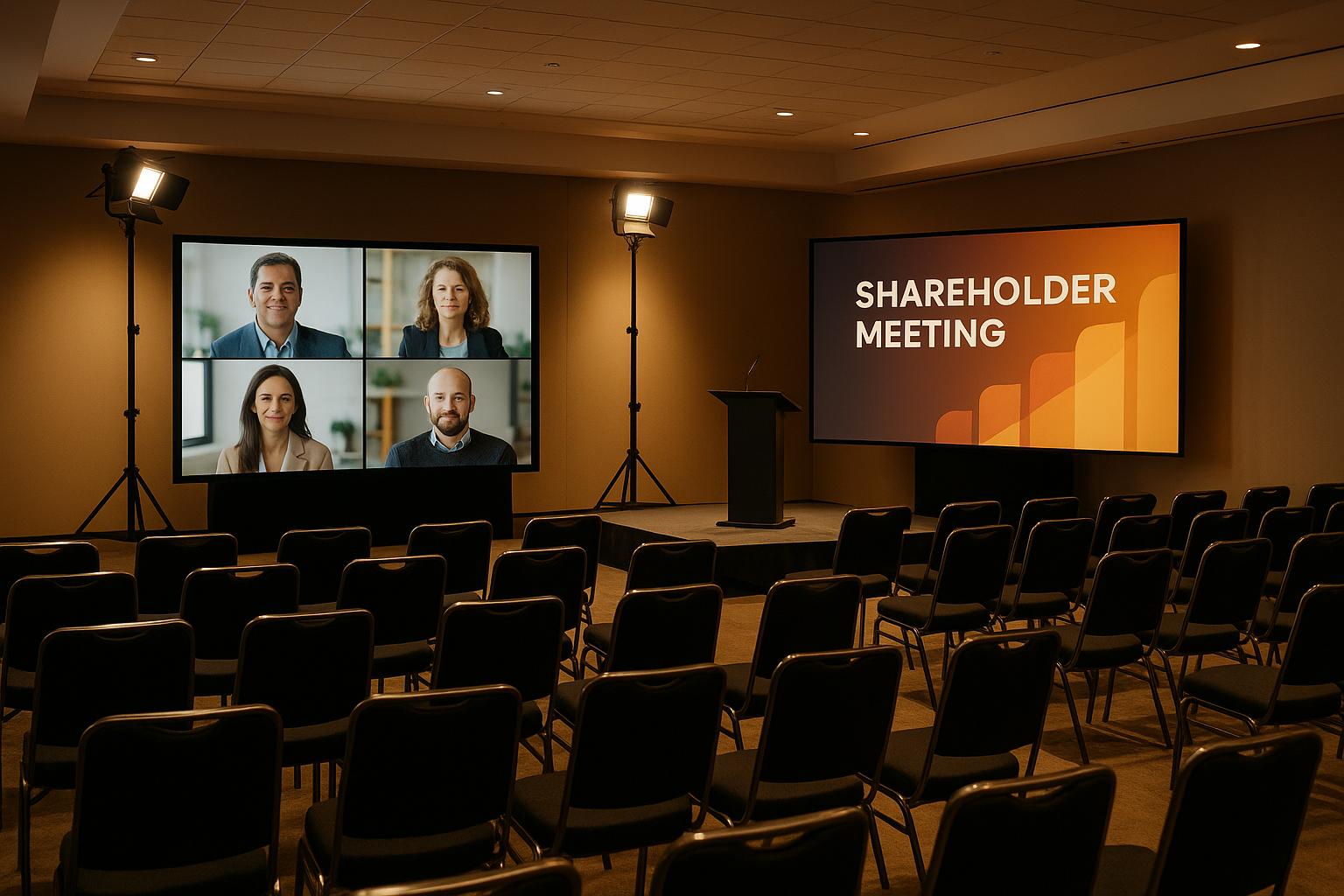Tips to Selecting the Right Venue for Your Company Conference

Chief Executive Officer
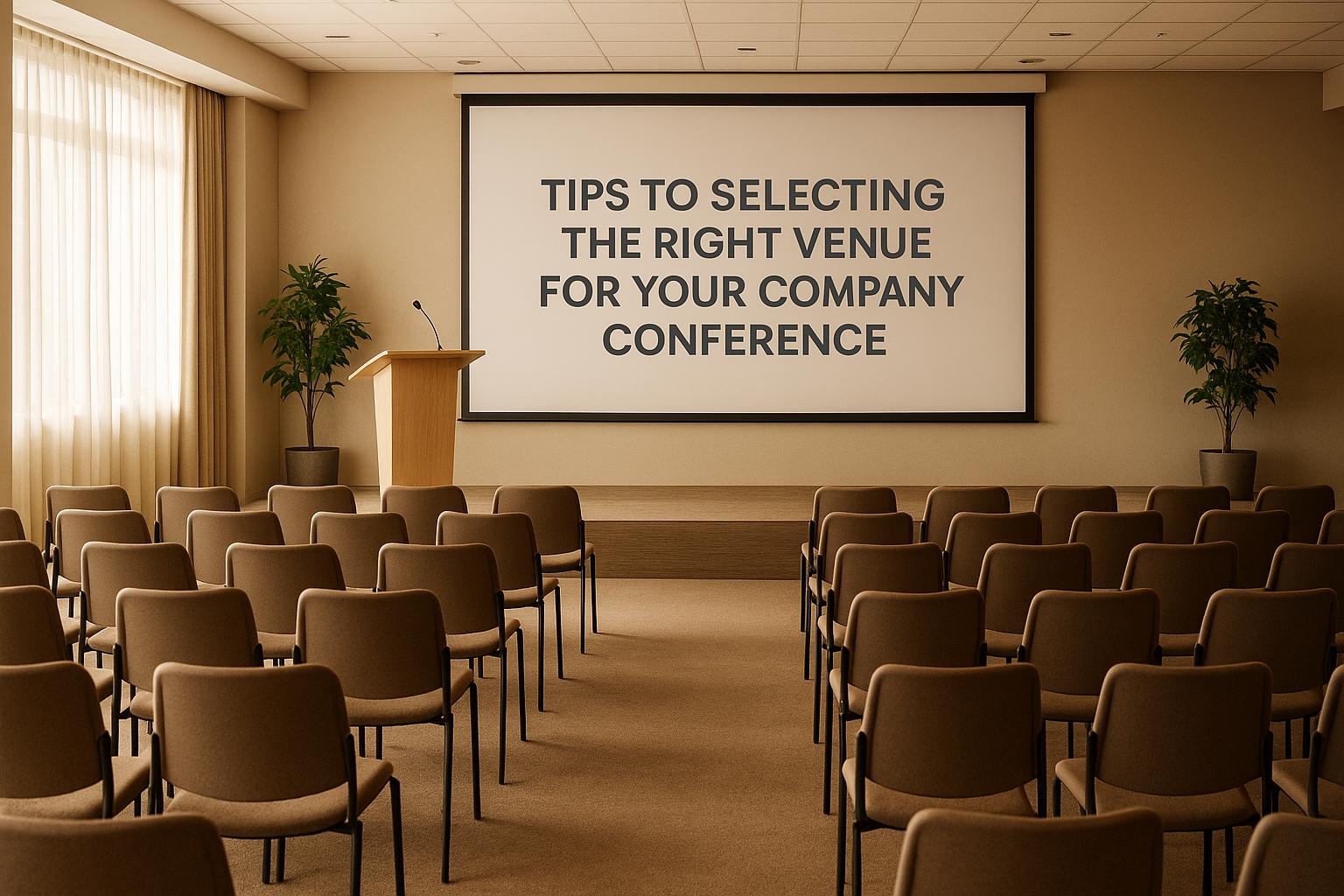
Selecting the perfect venue for your company conference can directly impact its success. Here’s what to focus on:
- Set Clear Goals: Define the purpose of your event - networking, education, or product launch. This shapes your venue choice.
- Estimate Attendance: Know your audience size to avoid booking a space that’s too small or too large.
- Location Matters: Choose a venue that’s easy to access, with ample parking and nearby accommodations.
- Check Amenities: Ensure the venue offers necessary features like Wi-Fi, AV equipment, and flexible room setups.
- Review Costs: Understand all expenses, including hidden fees like catering minimums and service charges.
- Verify Accessibility: Confirm ADA compliance and convenient access for all attendees.
- Test Technology: Reliable internet, sound systems, and lighting are non-negotiable for a smooth event.
- Negotiate Smartly: Prioritize added perks over discounts, like free Wi-Fi or extended access.
5 Pro Tips for Event Venue Selection and Negotiation [Event Insider 30]
Set Your Conference Goals and Requirements
Finding the right venue starts with getting clear on what you need. By defining your conference goals, estimating attendance, and identifying any must-haves, you can avoid booking a space that’s too big, too small, or simply not a good fit for your event.
Identify Your Event Goals
What do you want your conference to accomplish? Whether it’s networking, education, or launching a product, having clear objectives will shape all your decisions - from the type of venue to the session formats and logistics. Think of these goals as your roadmap for planning a successful event.
Calculate Attendee Needs
Knowing how many people are likely to attend is key for both your budget and your venue choice. Start by looking at your invitation list and attendance trends from similar past events. Keep in mind that not everyone you invite will show up, so aim for a realistic estimate. This way, you can choose a venue that fits your crowd comfortably while meeting any specific audience needs.
List Required Features
Once you’ve nailed down your objectives and attendee numbers, make a list of features your venue must have. These could include things like on-site tech support, catering services, accessibility options, or flexible room setups for different sessions. Having a clear list of requirements will make it much easier to narrow down your options and find a venue that checks all the boxes.
Check Location and Access
The location of your conference venue plays a key role in attendee participation. Even the most meticulously planned event can face challenges if attendees find the venue inconvenient or difficult to reach. Choosing the right location means thinking about the entire journey your attendees will take to get there.
Pick Convenient Locations
Choose venues that are easy to access, especially those near airports, major highways, or transit hubs. In cities, reliable public transportation - like subway or rail systems - can make a venue much more appealing.
Downtown venues often offer plenty of transportation options and infrastructure, but don’t overlook suburban locations. Suburbs can sometimes provide better value and easier parking options, which might be more suitable depending on your audience.
When considering location, think about your attendees. For a local audience, a venue close to familiar areas or your office may be ideal. On the other hand, for national or larger-scale conferences, venues in business districts with upscale dining and networking opportunities might be more appealing. These factors also tie into parking and accessibility, which are just as important.
Check Access and Parking
Parking is a major consideration. Ask venue managers about their parking capacity, costs, and whether they offer overflow parking options. Urban venues often come with higher parking fees, while suburban ones may provide cheaper - or even free - parking.
If parking is limited or expensive, find out if the venue has shuttle services from nearby hotels or transit hubs. Some venues also collaborate with ride-sharing services to offer discounts, making transportation more affordable for attendees.
Make sure the venue complies with ADA standards by checking for features like ramps, elevators, accessible restrooms, and designated parking spaces close to entrances. If you’re bringing equipment or setting up exhibits, ensure there are convenient loading and unloading areas. Additionally, the availability of nearby lodging, which we’ll cover next, can further enhance accessibility for attendees.
Look at Nearby Hotels
When hosting a multi-day conference, nearby hotels can make a big difference in attendee satisfaction. Hotels within walking distance or those offering shuttle services can simplify logistics and improve the overall experience.
Check the availability, pricing, and amenities of nearby hotels for your event dates. Many hotels offer group booking discounts and added perks for conference attendees, which can provide extra value.
Lastly, consider the dining and entertainment options in the area. A neighborhood with a variety of restaurants, activities, and a safe, walkable atmosphere can enhance the event and leave a lasting impression on your attendees.
Review Venue Size, Layout, and Setup Options
Once you've chosen a venue, it's time to ensure it meets the physical requirements of your event. These considerations build on the needs and location criteria you've already defined. The size and layout of the venue play a big role in both attendee comfort and the overall success of the event.
Check Capacity Limits
Capacity refers to the maximum number of people a venue can hold at one time, which can vary depending on how the space is used. Focus on the usable space - the actual floor area available for attendees. This excludes walls, columns, stages, registration tables, or catering setups. It's a good idea to verify this during your site visit with a measuring tool.
Different activities need different amounts of space per person. For example:
- Theater-style presentations: Plan for 6–8 square feet per person.
- Classroom-style seating: Allocate 14–18 square feet per attendee.
- Networking receptions: Allow 6 square feet per person for standing crowds, or 8 square feet for a mix of seated and standing areas.
Here’s a quick reference table to guide your planning:
| Event Setup Style | Square Feet Per Person |
|---|---|
| Theater-style seating | 6–8 sq ft |
| Classroom-style seating | 14–18 sq ft |
| Standing reception | 6 sq ft |
| Mixed seated/standing reception | 8 sq ft |
| Conference room meetings | 30–40 sq ft |
| Dinner seating (round tables) | 11–12 sq ft |
Make sure the venue's capacity complies with local fire codes. Contact your local building department to confirm the rules that apply.
Once you've confirmed the capacity, the next step is to evaluate the venue's layout for smooth event flow.
Look at Layout Options
The layout of your venue significantly impacts how attendees experience your event. Overcrowded or poorly organized spaces can frustrate guests, so it's essential to plan for smooth navigation and efficient use of space.
Consider whether your event requires multiple room setups throughout the day. For instance, a corporate conference might begin with a general session in theater-style seating, transition to smaller classroom-style breakout sessions, and end with a networking reception. Check whether the venue can reconfigure spaces between sessions or if you'll need separate rooms for each activity.
Pay attention to sightlines - make sure all seats have clear views of the stage or presentation area. Columns, low ceilings, or awkward angles can obstruct visibility, so factor these into your planning. If your event includes exhibits or sponsor booths, ensure there's enough room for attendees to move comfortably without creating bottlenecks.
For events with breakout sessions, venues offering flexible wall systems or adjacent rooms can be a big plus. This allows you to adjust room sizes based on actual attendance rather than early estimates.
When standard layouts don’t quite fit your needs, it’s time to explore custom configurations.
Ask About Custom Setups
Not every event fits neatly into a standard layout. Many venues offer custom configurations, so ask about their options and any associated costs.
For events like interactive workshops, panel discussions, or networking sessions, you might need a hybrid setup. This could include lounge areas with comfortable seating alongside traditional conference tables or stations for hands-on activities.
Check what furniture the venue provides to support these configurations. For example, round tables are excellent for fostering conversation, while long rectangular tables are better for workshops requiring space for materials.
Also, think about the logistics. Custom layouts may require extra time for setup and breakdown, which could impact your schedule or increase labor costs. Many venues offer tools like event diagramming software or 3D visualizations to help you picture the setup before making final decisions.
Finally, don’t forget to plan for essential functional areas. Registration tables, coat check stations, coffee setups, and quiet zones for phone calls or emails can make a big difference on the day of the event. While these might seem minor during planning, they’re crucial to ensuring everything runs smoothly.
sbb-itb-ae35a94
Check Audio, Video, and Technology Features
The right technology can make or break your conference. Issues like poor audio, unreliable internet, or malfunctioning equipment can derail even the most meticulously planned events. That’s why it’s crucial to evaluate the venue’s technical capabilities before signing any contracts.
Confirm Available Technology
Start with the essentials: Wi‑Fi capacity and reliability. Don’t just take the venue’s word for it - test their high-speed Wi‑Fi during peak usage to ensure it can handle your devices and activities without lag or interruptions.
Next, assess the venue’s sound system. Does it provide wireless and lapel microphones? Are backups available in case of technical hiccups? Test the system to make sure the sound quality is clear throughout the entire space - every attendee should be able to hear without straining.
For visuals, check the display options. Does the venue offer large screens or LED walls? Are they positioned to guarantee clear visibility for everyone in the room? These details are key for a smooth presentation.
Lighting is another factor that’s easy to overlook but incredibly important. The venue should offer adjustable lighting to accommodate different presentation needs. Whether you’re dimming the lights for a video or controlling natural light to avoid glare, make sure the venue has solutions like blackout curtains or adjustable shades.
Once you’ve confirmed the equipment, shift your focus to the support system behind it.
Ask About Technical Support
Even the best equipment is useless without reliable support. Find out if the venue provides dedicated AV technicians who can assist throughout your event, or if their support is limited to setup. Clarify whether technical assistance is included in the package or if it comes at an extra cost. It’s also worth checking whether the support team has experience with corporate events and the specific technology you plan to use.
Response times for technical issues are critical. If something goes wrong mid-presentation, you’ll want a team that can resolve it quickly to avoid major disruptions. Confirm that backup equipment - like spare microphones or projectors - is readily available on-site.
If your event involves specialized software or interactive systems, ask if the technical team is familiar with them. Some venues collaborate with external AV providers for more complex needs, which could be a valuable option depending on your event’s requirements.
Plan for Online Components
If your event includes online or hybrid elements, the venue’s support for these features is just as important. For hybrid events, confirm that the venue can handle live streaming and virtual engagement without hiccups. A dedicated wired ethernet connection is a must for reliable streaming, especially during high network traffic.
Think through the practicalities of your streaming setup. Where will cameras go for the best angles? Are there enough power outlets and internet access points around the room? Clear audio integration is non-negotiable - both presenters and audience interactions need to be captured so remote attendees have a seamless experience.
Finally, don’t skip a trial run during your site visit. Test the internet stability, audio quality, and camera placements to catch any potential issues early. Addressing these ahead of time will save you headaches and ensure everything runs smoothly on the big day.
Compare Services, Costs, and Value
Once you've confirmed that the venue provides solid technical support, it's time to dive into the details of services, costs, and overall value. Knowing exactly what’s included in your venue package - and what comes with an extra charge - can help you make a decision that fits both your budget and expectations.
Review Catering and Services
Catering isn’t something to leave until the last minute. During your site visit, take the opportunity to sample the venue’s menu. This gives you a firsthand look at the quality of food and presentation.
Pay special attention to how the venue handles dietary needs. Whether it’s vegetarian, vegan, or gluten-free options - or managing food allergies - a professional venue should be able to accommodate these requirements seamlessly and without excessive fees. Ask if they provide ingredient lists or have a system in place to address allergies safely.
Beyond catering, check if the venue offers experienced event coordinators. These professionals can ensure your event runs smoothly by anticipating needs and resolving issues before they arise. Ideally, they should be available throughout the event, not just during setup.
Also, explore additional services the venue might provide. Some venues include perks like registration desk setup, coat check, or event furniture such as cocktail tables and lounge seating. Others might have partnerships with local hotels or transportation services, which can offer discounts for your attendees. These extras can simplify your planning process and reduce the need for outsourcing to multiple vendors.
Compare Pricing Options
Venue pricing can vary significantly, so it’s essential to understand what you’re paying for. Most venues charge a base rental fee for a set time period, but this often doesn’t cover everything you might need.
Be mindful of service charges and gratuities, which typically add 18–22% to your total bill. Some venues include these fees in their quotes, while others tack them on later. Always ask for a full breakdown of costs upfront to avoid surprises.
Minimum spending requirements are another potential cost factor, especially for venues with in-house catering. For instance, a venue might charge a $2,000 room rental fee but require a $15,000 food and beverage minimum. If your event doesn’t hit that threshold, you’ll be responsible for the difference.
Overtime fees can also add up if your event runs longer than expected. Most packages include 8–10 hours of venue access (including setup and breakdown), but going over that limit can cost anywhere from $200 to $500 per hour, depending on the venue and location.
To keep everything organized, consider creating a comparison chart for your options:
| Venue | Base Rental | Catering Minimum | Service Charges | Overtime Rate | Total Estimated Cost |
|---|---|---|---|---|---|
| Downtown Hotel | $3,500 | $12,000 | 20% | $300/hour | $18,900 |
| Conference Center | $5,000 | $8,000 | 18% | $250/hour | $15,340 |
| Corporate Facility | $4,200 | $10,000 | 22% | $400/hour | $17,348 |
With a clear understanding of pricing, you can better evaluate which venue offers the most value for your event.
Get the Best Value for Your Budget
Getting the most for your money isn’t just about finding the cheapest option - it’s about maximizing what you get in return. A slightly more expensive venue that includes premium AV equipment, dedicated technical support, or flexible setup options might be a better investment than a bare-bones space that requires additional rentals.
Location plays a big role in value, too. A venue that’s easy to reach via public transportation or offers ample free parking can enhance your attendees' experience. For events with out-of-town guests, proximity to hotels and airports is a major plus.
Flexibility in timing can also save you money. Venues that allow early setup the night before or offer extended breakdown time can reduce stress and help you avoid overtime fees. Additionally, some venues provide discounts for weekday events or bookings during off-peak seasons.
Don’t underestimate the importance of a venue’s reputation. A location with a proven track record for hosting successful corporate events can provide peace of mind. Ask for references from clients who’ve hosted events similar in size and scope to yours.
Finally, bundled services can simplify planning and often provide better value. Venues that offer all-in-one packages, including AV support and staging, can save you time and reduce the hassle of coordinating multiple vendors.
When it comes to negotiating, aim for added perks rather than just a lower price. Complimentary Wi-Fi, extended access, or waived setup fees can often provide more value than a small discount on the base price. For multi-day events or off-peak dates, venues may be even more open to offering these extras.
Verify Safety, Legal Requirements, and Contracts
Check Safety and Permits
Make sure the venue collaborates with service providers certified under the U.S. Department of Homeland Security (DHS) SAFETY Act. This certification ensures that critical areas like physical screening, access control, and crowd management are handled effectively. It also protects the venue from legal liability, as a DHS SAFETY Act Certified provider takes on the responsibility for security failures, including third-party lawsuits related to acts of terrorism. Additionally, review any required permits or contractual obligations to confirm that everything complies with local regulations.
Conclusion: Make the Right Choice for Your Event
Choosing the right venue plays a key role in shaping the attendee experience, ensuring the success of your event, and achieving a solid return on investment. Start by reviewing your conference goals alongside practical considerations like location, capacity, technology needs, budget, and safety. These factors create the foundation for making an informed decision.
Once you've outlined your basic requirements, focus on the must-haves that directly align with your event's objectives. The ideal venue is one that checks all your boxes while staying within your budget.
For extra support, you might want to explore professional event production services. Companies like Corporate Optics bring valuable expertise to the table, leveraging their relationships with venues and negotiation skills to secure great deals and streamline the planning process. They ensure that every detail - technical, logistical, and contractual - is handled efficiently, giving you peace of mind.
Experienced professionals also offer a significant advantage with their insider connections and bargaining power. They can often negotiate better rates, secure preferred dates, and arrange more favorable service terms than you might achieve on your own. Plus, their ability to spot and resolve potential issues early helps ensure your event runs smoothly from start to finish.
Take the time to visit potential venues, ask thorough questions, and request references to confirm they align with your needs. A well-thought-out venue choice pays off in attendee satisfaction, event impact, and the overall success of your conference.
FAQs
How can I estimate the number of attendees to choose the right venue size for my company conference?
To get a handle on attendance for your company conference, start by looking at data from past events if you have it. If not, tools like pre-registration forms, employee surveys, or social media polls can help you measure interest and give you a better idea of how many people might show up.
Once you have a rough estimate, pick a venue that comfortably accommodates your expected crowd but also offers some wiggle room for unexpected changes. A space that's too tight can feel overcrowded, while a venue that's too large might make the event feel emptier than it is. The goal is to find a setting that feels welcoming, professional, and just the right size.
How can I negotiate better deals or perks with conference venues?
To land better deals or perks with conference venues, focus on showing the value your event brings to their space. For instance, committing to multiple bookings or signing a multi-year agreement can often open the door to discounts or extra perks.
Make sure to communicate your needs and budget clearly, but keep the conversation friendly and respectful. Venues are usually more open to negotiation when they sense you're genuinely interested and willing to work together.
Also, take the time to understand what matters most to the venue and be ready to meet them halfway. Flexibility with event dates or schedules, for example, could lead to free upgrades, extra services, or lower rates. A cooperative and positive attitude can make all the difference in securing a great deal.
How can I make sure the venue is equipped for a hybrid conference with both in-person and virtual attendees?
To prepare a venue for a hybrid conference, make sure it offers reliable high-speed internet - ideally, a wired connection with upload and download speeds of at least 10 Mbps. Additionally, the venue should be equipped with modern audiovisual systems capable of handling live streaming. Check for an adequate number of power outlets and network ports to meet your technical requirements.
Find out if the venue supports interactive features like live Q&A sessions, audience polls, and breakout rooms to keep virtual attendees engaged. Testing all technology beforehand and having on-site technical support available will go a long way in ensuring a seamless experience for both in-person and online participants.
Related Blog Posts
